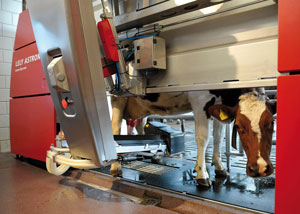As we know, HIV and AIDS has impacted every corner of the globe. However, there are
certain countries that have been harder hit than others. And unfortunately, some of the hardest hit areas are those countries with the least number of resources to combat the problem. As one of the richest nations in the world, and one of those nations that has had some success in managing the epidemic, the US felt they needed to help those countries struggling with HIV by providing an AIDS funding.
What is PEPFAR?
In his
State of the Union Address in January 2003, President George Bush made a commitment to help countries hard hit by HIV and AIDS.
"I ask the Congress to commit $15 billion over the next five years, to turn the tide against AIDS in the most afflicted nations of Africa and the Caribbean."
In May of the same year the US Congress approved a Bill called the
"United States Leadership Against HIV/AIDS, Tuberculosis and Malaria Act of 2003". This initiative was intended to prevent 7 million new infections, treat 2 million people living with AIDS related illnesses, and provide care and support for 10 million persons affected by AIDS. When the President signed that Bill into law it committed $15 billion dollars over five years to fight HIV in countries hardest hit yet had the fewest resources;
The President's Emergency Plan for AIDS Relief (PEPFAR) was born. The initial $350 million was allocated in January 2004 with PEPFAR going into full affect in June 2004. Keep in mind that the $15 billion is not the only money the US spends each year in the war against HIV and AIDS. Domestic spending; money spent to battle HIV at home tops $12 billion each year.
How was the Money to be Spent?
In writing the Bill that authorized PEPFAR, Congress was very specific on how and where the money would be spent.
- 55% of the funds was allocated for medications that treat HIV.
- 15% of the funds were to be used for improving the lives of those patients living with HIV.
- 20% was to be allocated for prevention programs however 30% of that money was mandated to be used for abstinence only education.
- 10% was allocated to assist children and orphans of HIV positive parents.
Who Will Benefit From PEPFAR?
In 2003 when PEPFAR was enacted, 14 countries were chosen as the "focus" countries, meaning that the money provided by the legislation was to be used primarily for combating HIV in those countries. A fifteenth country was added the following year. The 15 countries that currently make up the focus group include:
- Botswana
- Cote d'Ivoire
- Ethiopia
- Guyana
- Haiti
- Kenya
- Mozambique
- Namibia
- Nigeria
- Rwanda
- South Africa
- Tanzania
- Uganda
- Zambia
- Vietnam
While there are focus countries, that does not imply that the PEPFAR money can't be used in other places. For instance, the PEPFAR money is currently being used to fund the substantial amount of HIV work being done in
India; another country hard it by the epidemic.
PEPFAR Reauthorization
When PEPFAR was approved in 2003, the legislation was passed for a term of 5 years, meaning funds would end after 2008 if the legislation was not reauthorized. With that in mind, a new Bill was written and submitted to the US House of Representatives, the first step in the approval process.
The new version calls for $10 billion to be allocated each year from 2009 to 2013 at which time the legislation would have to be reauthorized once again. Of the total $50 billion dollars, $9 billion would be used to fight malaria and tuberculosis. The new allocations amount to a more than $5 billion per year increase. Some specific provisions of the new legislation include:
- $9 billion would be allocated to fight tuberculosis and malaria, which often affect HIV-positive people in Africa;
- underwrite food supplements for people living with HIV/AIDS;
- add Lesotho, Malawi and Swaziland as PEPFAR focus countries;
- adds a "conscience clause" that would allow groups to not endorse prevention methods that they find religiously or morally objectionable;
- provide loans to women widowed by the disease or ostracized because of their HIV-positive status.
Maybe one of the biggest changes is the removal of the clause requiring 30% of prevention funds be allocated to abstinence only prevention programs. The new version requires "balanced funding" for abstinence, fidelity and
condom programs in each PEPFAR focus country. In addition, the bill would retain the requirement that PEPFAR recipients pledge opposition to commercial sex work. However, while it would allow groups to use PEPFAR funding for HIV testing and education in family planning clinics, the money could not be used for contraception or abortion services. Finally, the bill requires reports to Congress if abstinence and fidelity programs compose less than half of country-level spending on programs aimed at preventing
sexual transmission of the virus.
While the House of Representatives passed the Bill in April 2008, support of the legislation is not unanimous. Some feel it is a huge expenditure given there is so much need here in the United States, especially considering how many US citizens lack health care and insurance. Others feel it is one of America's best foreign policy legislations since World War II.
After passing in the House, the Bill was sent to Congress for their approval. While it has gained approval of the Foreign Relations Committee within Congress, as of July 2008 the Bill had yet to gain full Congressional approval.
Sources
- Kaiser Daily HIV/AIDS Report; "Politics and Policy - House Approves PEPFAR Reauthorization Bill"; 3 Apr 2008.
- Kanabus, A. and Noble, R.; "What is PEPFAR?"; Avert.org; 30 Jun 2008.


